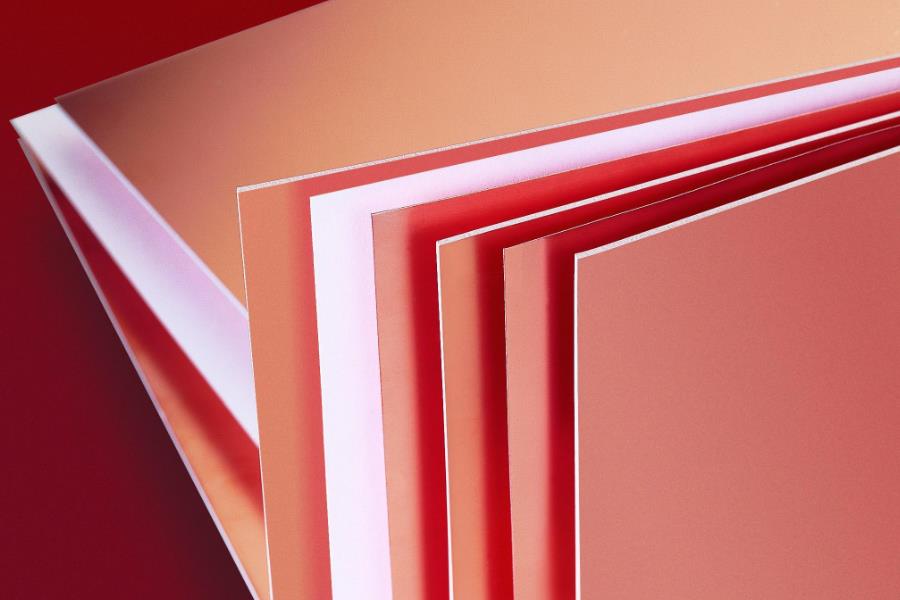Copper Clad Laminate (CCL) is the upstream core material of PCB manufacturing. It is a kind of board made by impregnating electronic glass fiber cloth or other reinforcing materials with resin, and covering one or both sides with copper foil and hot pressing. The shape of the material is responsible for the three major functions of (PCB) conduction, insulation and support. Copper clad laminates account for 20% to 40% of the entire PCB production cost, accounting for the highest proportion of all PCB material costs, and have a strong interdependence with PCB.
The role of copper clad laminate
As the substrate material in the manufacture of printed circuit boards, copper clad laminates mainly play the role of interconnection, insulation and support for the PCB, and have a great impact on the transmission speed, energy loss and characteristic impedance of the signal in the circuit. Therefore, The performance, quality, processability in manufacturing, manufacturing level, manufacturing cost, and long-term reliability and stability of printed circuit boards depend to a large extent on copper clad laminates.

Copper Clad Laminate (CCL)
Classification of copper clad laminates
1. According to the mechanical rigidity of the copper clad laminate, it can be divided into rigid copper clad laminate (Rigid Copper Clad Laminate) and flexible copper clad laminate (Flexible Copper Clad Laminate)
2. According to different insulating materials and structures, it can be divided into organic resin-based copper clad laminates, metal-based copper clad laminates, and ceramic-based copper clad laminates.
3. According to the thickness of the copper clad laminate, it can be divided into thick plates (the thickness range is 0.8~3.2mm (including Cu)) and thin plates (the thickness range is less than 0.78mm (excluding Cu)).
4. According to the reinforcing material of the copper clad laminate, it is divided into glass cloth-based copper clad laminate, paper-based copper clad laminate, and composite-based copper clad laminate (CME-1, CME-2).
5. Divided into flame-retardant and non-flame-retardant panels according to the flame-retardant grade: According to UL standards (UL94, UL746E, etc.), the CCL flame-retardant grade is divided, and rigid CCL can be divided into four different flame-retardant grades : UL-94V0 level; UL-94V1 level; UL-94V2 level and UL-94HB level.
The quality index of copper clad laminate
The quality of the copper clad laminate directly affects the quality of the PCB. The main non-electric technical standards for measuring the quality of copper clad laminates are as follows:
1. Copper-clad index-peel strength: The peel strength is the minimum force required to peel off the substrate with a unit width of copper foil, and the unit is kg/cm. Use this index to measure the bonding strength between the copper foil and the substrate. This index mainly depends on the performance of the adhesive and the manufacturing process.
2. Copper clad index-warpage: Warpage refers to the warpage value per unit length, which measures the roughness index of the copper clad board relative to the plane, and depends on the substrate material and thickness.
3. Copper-clad index-bending strength: The bending strength indicates the ability of the copper-clad plate to withstand bending, in kg/cm. . This index mainly depends on the substrate material of the copper-clad board. This index should be considered when determining the thickness of the PCB.
4. Copper index-dip solder resistance: dip solder resistance refers to the resistance of the copper foil that can withstand the peeling resistance of the copper foil after being placed in the molten solder at a certain temperature for a period of time (usually 10s). Generally, the copper foil board is required to be free from blistering and delamination. If the immersion solderability is poor, the printed board may fall off the pads and wires when the printed board is soldered many times. This index has a great influence on the quality of printed circuit boards, which mainly depends on the board and the adhesive.
In addition, the PCB technical indicators for measuring copper-clad boards include surface smoothness, smoothness, pit depth, dielectric properties, surface resistance, and cyanide resistance.